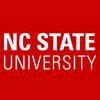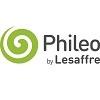Explore all the information on
Minerals in swine nutrition
Minerals constitute a small percentage of swine diets, but their importance cannot be over-emphasized. Functions of minerals are extremely diverse, serving a variety of structural, metabolic, and regulatory functions in all body components. The mineral nutrition of pigs must be precise because adding excess minerals to the diet can be costly and cause toxicity while not providing enough minerals can result in deficiency and reduce productivity.
Minerals are classified into macrominerals and microminerals according to the amount required in the diet. Macrominerals or major minerals need to be supplied in larger amounts in swine diets, as is the case of calcium, phosphorus, sodium, chlorine, magnesium, and potassium. Microminerals or trace minerals need to be supplied in smaller amounts in swine diets, as is the case of zinc, copper, iron, manganese, iodine, and selenium. Chromium is also sometimes added to sow and finisher diets to improve performance.
Grains and oilseeds commonly used in swine diets are sources of macrominerals and trace minerals. However, the intrinsic minerals are often found at low concentration and availability in feedstuffs is questionable. Consequently, it is essential to balance the diets using supplemental mineral sources to meet the requirements.
Comments related to #Minerals in swine nutrition
Top 10 content about #Minerals in swine nutrition


























